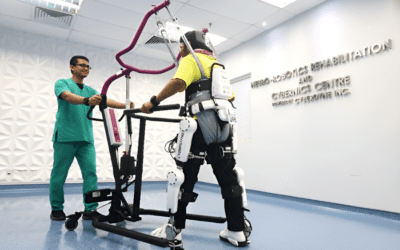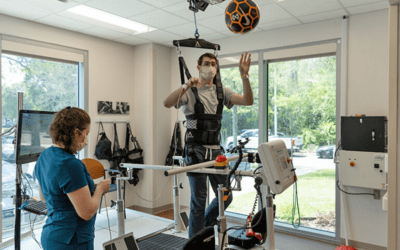
What is a coma?
A coma is a state of deep unconsciousness in which a person is unresponsive to their environment and unable to wake up.
Symptoms of a Coma in this condition, the individual cannot respond to external stimuli such as touch, sound, or light, and they do not exhibit purposeful movements or communication.
Causes of a Coma results from severe brain damage or dysfunction, often caused by factors like head injury, stroke, lack of oxygen (hypoxia), drug overdose, or an underlying medical condition.
Define locked-in syndrome:
Locked-in syndrome is a rare neurological condition in which a person is fully conscious and aware but is unable to move or speak due to near-total paralysis.
Causes of Locked-In Syndrome the condition is typically caused by damage to the brainstem, often from a stroke, traumatic brain injury, or other conditions affecting the pons, a part of the brainstem that controls motor functions.
Symptoms of Locked-In Syndrome individuals with locked-in syndrome can usually communicate only through eye movements, such as blinking, as these are often the only voluntary muscles they can control. Although they cannot move or speak, their cognitive functions, including thinking and reasoning, remain intact.
Coma and locked-in syndrome: key Difference
The primary differences between coma and locked-in syndrome lie in the levels of consciousness and physical abilities:
Consciousness in Coma and Locked-In Syndrome
The person is completely unconscious and unresponsive to external stimuli. They are not aware of their surroundings and cannot wake up or communicate, Whereas in Locked-In Syndrome the person is fully conscious and aware of their surroundings but cannot move or speak due to paralysis. They have a clear level of awareness and cognitive function.
Physical Abilities in Coma and Locked-In Syndrome
There is no voluntary movement, although basic reflexes may still be present. The person cannot perform purposeful actions or communicate. Whereas in Locked-In Syndrome in the person cannot move except for limited movements like eye blinking or eye movements. Communication is typically facilitated through these minimal movements.
Cause Coma and Locked-In Syndrome
Often caused by severe brain injury, stroke, lack of oxygen, or other conditions affecting brain function. Whereas in Locked-In Syndrome it is usually cause damage to the brainstem, which disrupts motor control pathways but leaves cognitive functions intact.
Prognosis Coma and Locked-In Syndrome
Outcomes vary; some individuals may regain consciousness, while others may progress to a vegetative state or remain in a coma. Whereas in Locked-In Syndrome Recovery of movement or communication is possible but often limited; some individuals may benefit from therapy and adaptive technologies.
How does Locked-In Syndrome happen?
Locked-in syndrome typically occurs due to damage to the brainstem, particularly the pons, which is a crucial part of the brainstem that controls motor functions and facilitates communication between the brain and the rest of the body. The following are common causes of locked-in syndrome…
Stroke
- Description: A stroke can disrupt blood flow to the brainstem, causing damage to the areas responsible for motor control and communication.
- Mechanism: An ischemic stroke (blocked blood flow) or hemorrhagic stroke (bleeding) in the brainstem can lead to locked-in syndrome.
Traumatic Brain Injury
- Description: Severe trauma to the head, such as from an accident, can injure the brainstem.
- Mechanism: Damage to the brainstem due to physical impact or injury can impair motor functions while leaving cognitive functions intact.
Brainstem Tumors
- Description: Tumors in the brainstem can compress or invade brainstem tissues.
- Mechanism: This compression or invasion can interfere with the neural pathways responsible for voluntary movement and communication.
Brainstem Infection or Inflammation
- Description: Infections or inflammatory conditions affecting the brainstem can disrupt its function.
- Mechanism: Conditions like encephalitis or meningitis may cause swelling or damage in the brainstem, leading to locked-in syndrome.
Degenerative Diseases
- Description: Certain diseases, such as progressive supranuclear palsy or amyotrophic lateral sclerosis (ALS), can affect the brainstem.
- Mechanism: These conditions gradually damage the brainstem and motor pathways, leading to symptoms of locked-in syndrome over time.
Multiple Sclerosis
- Description: Multiple Sclerosis can cause lesions in the brainstem that interfere with motor control and communication.
- Mechanism: The demyelination process in MS can affect the brainstem’s ability to relay signals between the brain and body.
In locked-in syndrome, while cognitive functions remain intact, the brainstem damage impairs motor control and voluntary muscle movement, leading to the paralysis of almost all voluntary muscles except for those controlling eye movements. This condition results in the person being fully aware but unable to communicate or move, except through eye movements or blinking.
Rehabilitation in Coma and Locked-in Syndrome include

- Medical Stabilization
- Neurological Assessment
- Physical Therapy for Coma and Locked-In Syndrome
- Occupational Therapy
- Speech Therapy for Locked-In Syndrome
- Family and Caregiver Training
In summary, a coma involves a lack of consciousness and responsiveness, while locked-in syndrome involves preserved awareness with complete paralysis, except for eye movements.
In both conditions, rehabilitation aims to maximize function and quality of life, but the approaches differ significantly based on the level of consciousness and physical capabilities.



